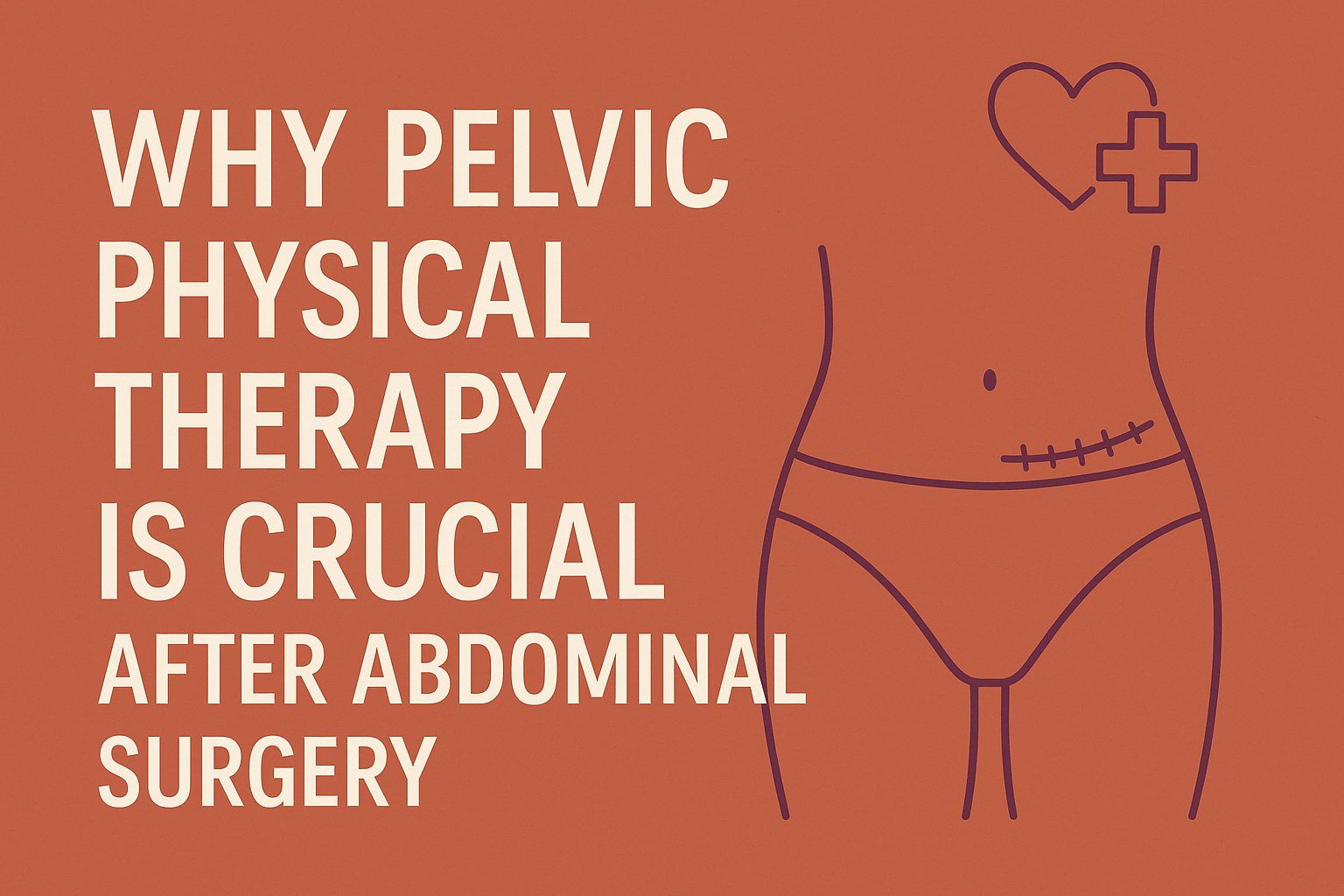Why Post-Surgical Scar Tissue Deserves More Attention Than It Gets
When we think about recovery after abdominal surgery—whether it’s a C-section, hysterectomy, hernia repair, or another procedure—the focus is often on the external incision. Once the scar “looks healed,” we’re told we’re all set.
But healing on the outside doesn’t always mean healing on the inside.
What’s often overlooked is the scar tissue forming beneath the surface—within the layers of fascia, muscle, and connective tissue that hold everything in place. Over time, these soft fascial adhesions can restrict mobility, irritate nerves, and create a ripple effect that contributes to pain, pressure imbalance, and dysfunction throughout the core and pelvis.
What Is Scar Tissue—and Why Does It Matter?
Scar tissue is the body’s natural way of closing wounds. It forms collagen-rich bands to “stitch” tissue back together—but this tissue is less elastic and more rigid than the original. Deep inside the abdomen, it can connect tissues that aren’t meant to be stuck together, limiting how your organs glide, how your muscles contract, and how your nerves move.
These internal adhesions may affect:
- The bladder, uterus, or bowel’s ability to shift naturally
- The way pressure is managed when you lift, breathe, or bear down
- Sensitive nerve pathways, like the ilioinguinal, genitofemoral, or pudendal nerves
- Lymph and blood flow throughout the abdominal cavity
Signs Scar Tissue May Be Affecting You
Even years after surgery, scar tissue can be a hidden source of:
- Abdominal tightness or pulling
- Bloating or digestive discomfort
- Pain with sex (dyspareunia)
- Urgency, leaking, or bladder irritation
- Back or hip pain
- Pelvic heaviness or pressure
- Difficulty connecting with your core
- Sensations of “numbness,” tingling, or deep aching around the scar or pelvis
The Pressure Problem: Why It’s Bigger Than Just One Spot
Your body is built to manage intra-abdominal pressure—the natural pressure created when you move, breathe, and bear weight. After surgery, if scar tissue limits how your diaphragm, abdominal wall, and pelvic floor coordinate, this pressure can become unbalanced.
The result? Your pelvic floor may take on too much strain, leading to:
- Stress urinary incontinence (leaking with sneezing, laughing, lifting)
- Pelvic organ prolapse
- Constipation or painful bowel movements
- Pelvic pain, especially with movement or intimacy
So What Can Be Done?
Scar tissue doesn’t have to be a lifelong source of pain or dysfunction. Gentle, targeted therapy can help release adhesions and restore motion where the body has been stuck.
Fascial Release & Scar Mobilization
I use decompressive manual therapy techniques to gently move the layers of skin, fascia, and tissue beneath the scar—encouraging better glide, blood flow, and sensation.
Breath & Pressure Work
Learning to regulate intra-abdominal pressure through breathing and core coordination can reduce strain on healing tissues and improve movement from the inside out.
Education & Awareness
Understanding the impact of your scar can help you reclaim confidence in your body. You’ll learn tools for daily self-care, movement, and how to spot signs of imbalance early.
It’s Never “Too Late” to Address Scar Tissue
Whether your surgery was 6 weeks ago or 16 years ago, your body is always adapting. Releasing stuck tissue, calming nerve irritation, and restoring natural movement patterns can alleviate symptoms, reduce pain, and help you reconnect with your core.
Want to explore if your scar could be playing a role in your symptoms?
Contact me to schedule a consultation or learn more about gentle scar tissue therapy.
You deserve a full recovery—on the inside and out.
Let’s get your body feeling like home again.


Leave a Reply